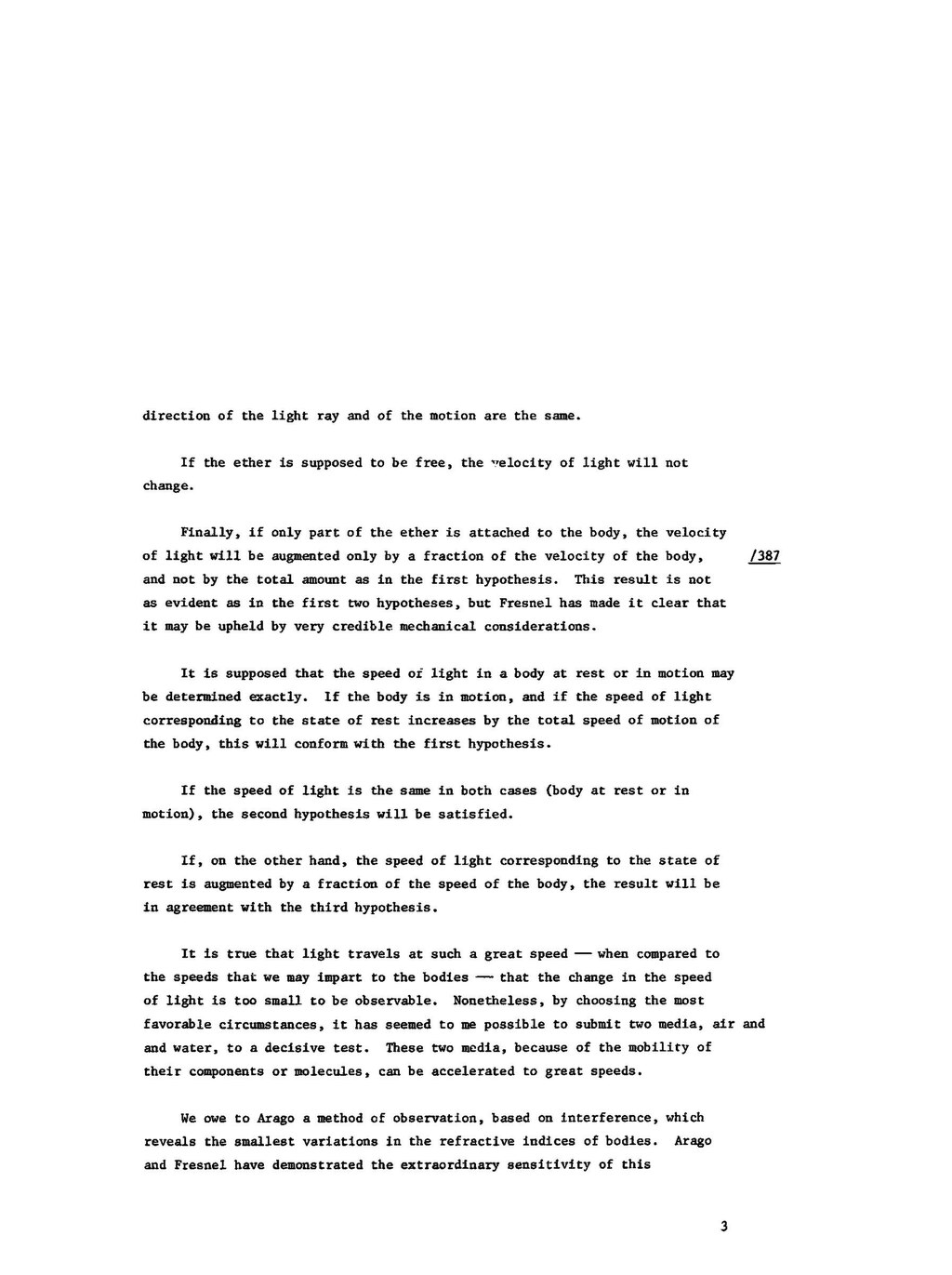direction of the light ray and of the motion are the same.
If the ether is supposed to be free, the velocity of light will not change.
Finally, if only part of the ether is attached to the body, the velocity of light will be augmented only by a fraction of the velocity of the body, /387 and not by the total amount as in the first hypothesis. This result is not as evident as in the first two hypotheses, but Fresnel has made it clear that it may be upheld by very credible mechanical considerations.
It is supposed that the speed of light in a body at rest or in motion may be determined exactly. If the body is in motion, and if the speed of light corresponding to the state of rest increases by the total speed of motion of the body, this will conform with the first hypothesis.
If the speed of light is the same in both cases (body at rest or in motion), the second hypothesis will be satisfied.
If, on the other hand, the speed of light corresponding to the state of rest is augmented by a fraction of the speed of the body, the result will be in agreement with the third hypothesis.
It is true that light travels at such a great speed — when compared to the speeds that we may impart to the bodies — that the change in the speed of light is too small to be observable. Nonetheless, by choosing the most favorable circumstances, it has seemed to me possible to submit two media, air and and water, to a decisive test. These two media, because of the mobility of their components or molecules, can be accelerated to great speeds.
We owe to Arago a method of observation, based on interference, which reveals the smallest variations in the refractive indices of bodies. Arago and Fresnel have demonstrated the extraordinary sensitivity of this